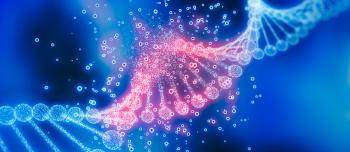Why does treatment for women and girls with bleeding disorders lag so far behind treatment for men, and what can we do about it? These were the central questions of “Women Bleed Too: Addressing the Blind Spots,” on Thursday, August 21, at NBDF’s Bleeding Disorders Conference.
Historically, women, girls, and people with the potential to menstruate (WGPPM) have been excluded from medical research, and that includes research into bleeding disorders, explained Halli Benasutti, PhD, director of research grants, NBDF. The reasons typically cited are rooted in sexism: “women are too biologically complicated,” or “women and men are so physically different that including them in a study would have negative results of the trial.” But when the experiences of WGPPM who live with a bleeding disorder aren’t studied and quantified, it means that these same people are underdiagnosed, underrecognized, and undertreated. In some cases, it can impede WGPPM’s ability to access a safe and effective treatment plan, because the indications for medication were based on male-focused studies.
This has resulted in worse care for WGPPM with bleeding disorders. They have higher rates of anemia, blood transfusions, and have more hysterectomies and have them at a younger age. WGPPM with bleeding disorders often face heavier, more painful periods and ovulation bleeding, which can deeply affect daily life—from school and work to broader opportunities—yet the stigma around menstruation has left diagnosis and treatment to rest largely on their own perceived experiences.
If more WGPPM were included in research, the results would be overwhelmingly positive, Benasutti stated. It would lead to accurate diagnoses and treatment, create better clinical guidelines for care, and possibly uncover health issues unique to WGPPM with bleeding disorders. Additionally, it would help to build trust in a system that has repeatedly ignored or invalidated WGPPM with bleeding disorders. We could find out more about if therapies designed for men with hemophilia could be used to treat WGPPM with VWD, or if we need to be focusing on alternative treatment options, Benasutti said. What roles do hormones, menstruation, pregnancy, and perimenopause have on blood vessels for WGPPM? What could we learn about joint bleeds?
Paxton Mills, NBDF board member, NYLI alum, and a lived experience expert, said that a key part of closing the diagnostic delay gap for women, girls, and people who have/had the potential to menstruate is prioritizing the collection and analysis of the stories of WGPPM. “Without it, analysis is incomplete. Our stories have the power to shape the future.”
The good news is there are many opportunities for women to play a part in research. NBDF proudly offers several: Community Voices in Research, the Bleeding Disorders Research Collaborative, and research roundtables and advisory panels. (To get involved, you can fill out this form here.) ATHN and the CDC are also conducting studies on WGPPM with bleeding disorders. This has resulted in more published research: more than 300 papers on bleeding disorders in women have been published since 2020 – more than the previous 10 years combined.
“Ladies, we bleed too,” shared lived experience expert Kayla Carper, who spoke at the end of the session. “It just took a little longer to be heard!”





